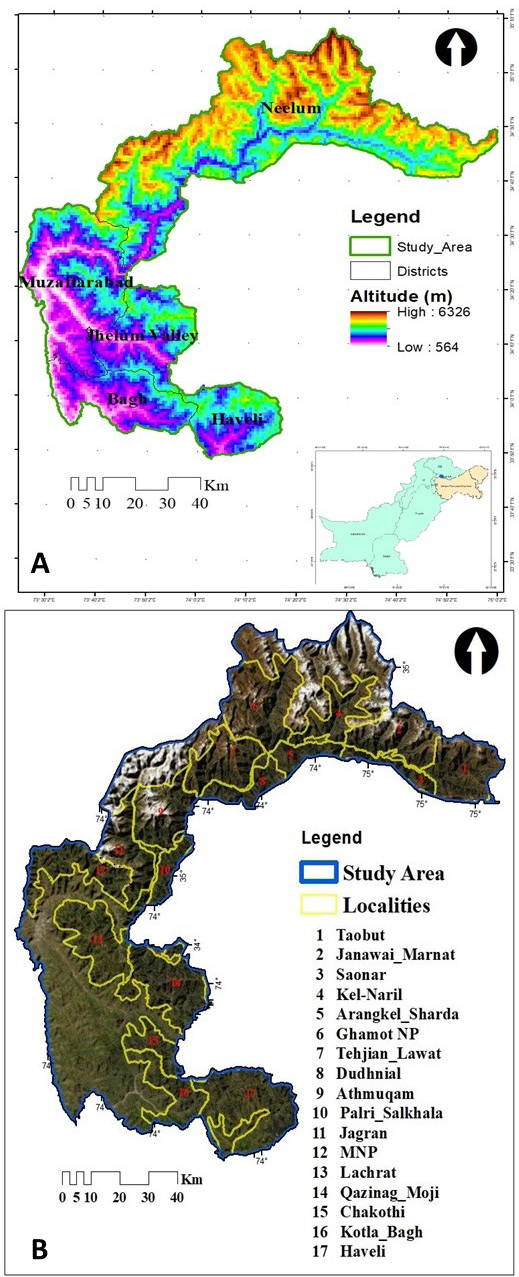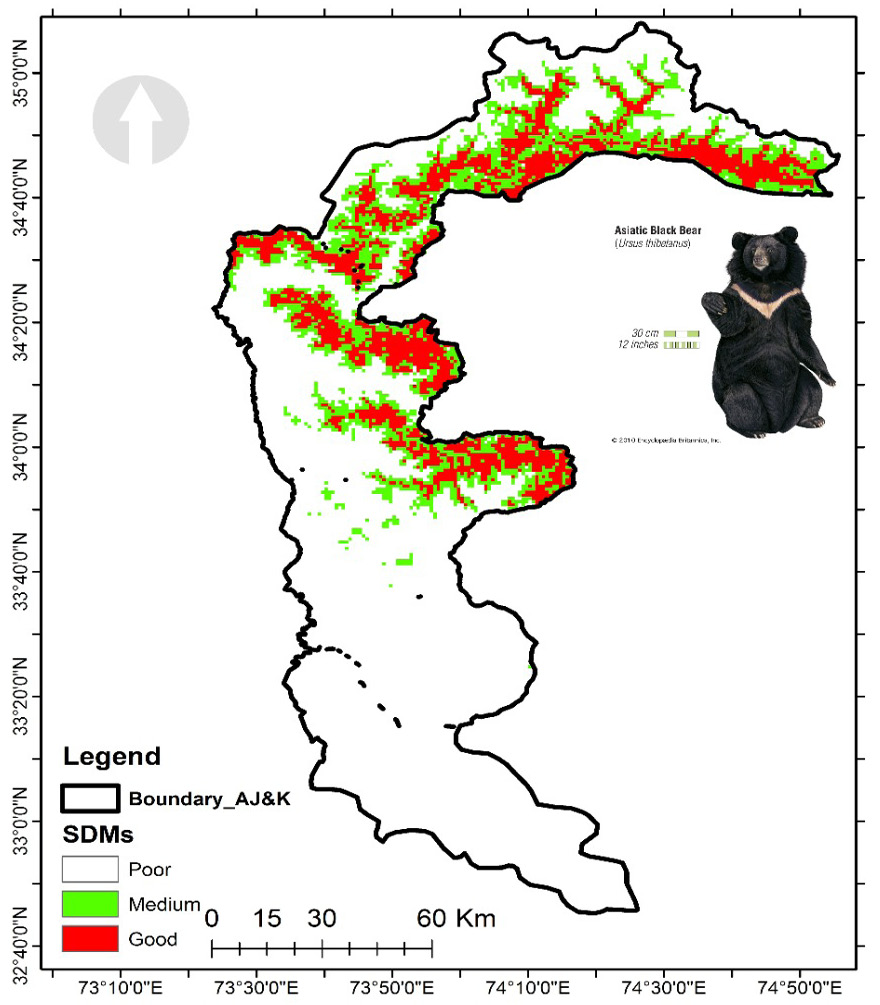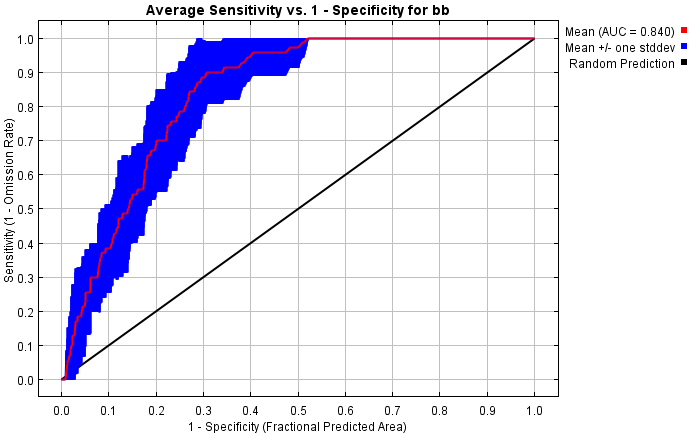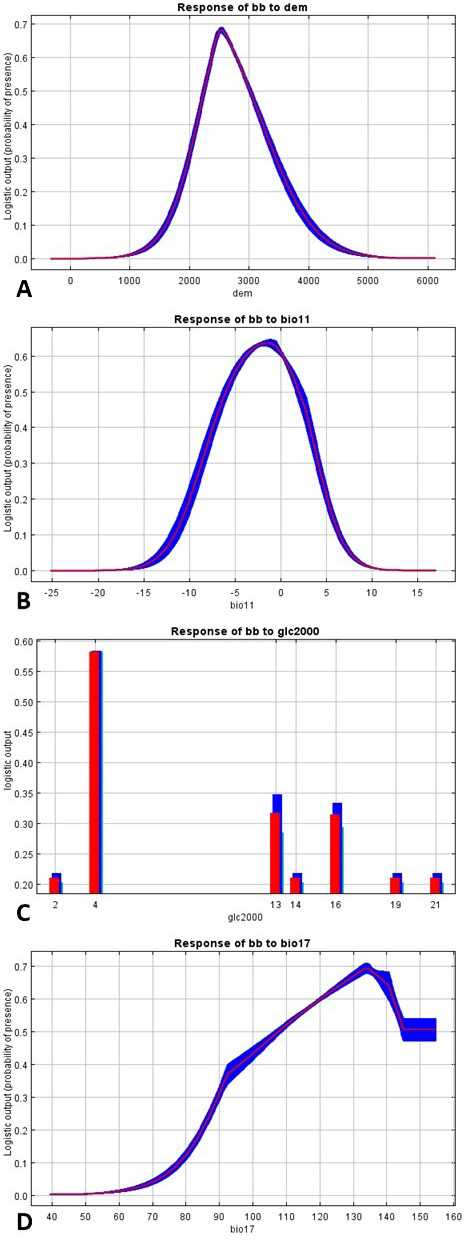Habitat Suitability Modeling of Asiatic Black Bear (Ursus thibetanus) in Azad Jammu and Kashmir, Pakistan
Habitat Suitability Modeling of Asiatic Black Bear (Ursus thibetanus) in Azad Jammu and Kashmir, Pakistan
Usman Ali1,2*, Basharat Ahmad1, Riaz Aziz Minhas1, Muhammad Kabir3, Muhammad Siddique Awan1, Liaqat Ali Khan1 and Muhammad Bashir Khan1
Map of the study area showing northern districts (A), and different study sites (B) in AJ&K.
SDMs prediction of Asiatic black bear distribution in AJ&K.
Binary map of Asiatic black bear presence/absence in the study area.
Averaged omission and predicted area for Asiatic black bear presence illustrated the test omission rate and predicted area as a function of the cumulative threshold, averaged over the replicate runs.
Analysis of omission/commission showing how well the model accurately predicted ABB presence; the AUC of 0.840 means that the model is an excellent predictor of ABB presence as Maxent output.
Response curves of probability of presence of Asiatic black bear to (A): Elevation, (B): mean temperature of coldest quarter, (C): global land cover (D): precipitation of driest quarter. The red curves represent the mean trends while the blue shades show the mean +/- the standard deviation. In each graph, the x-axis shows the change in each environmental variable, while the y-axis shows the species’ probability of presence.















